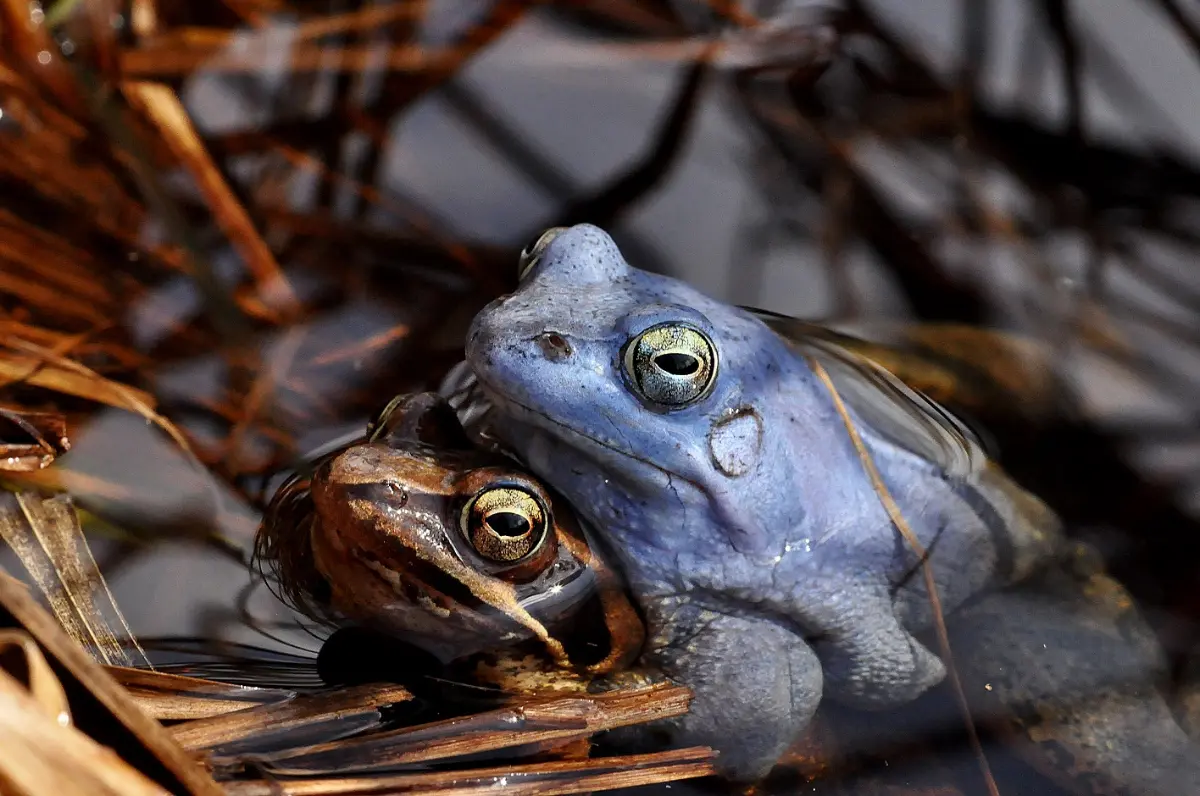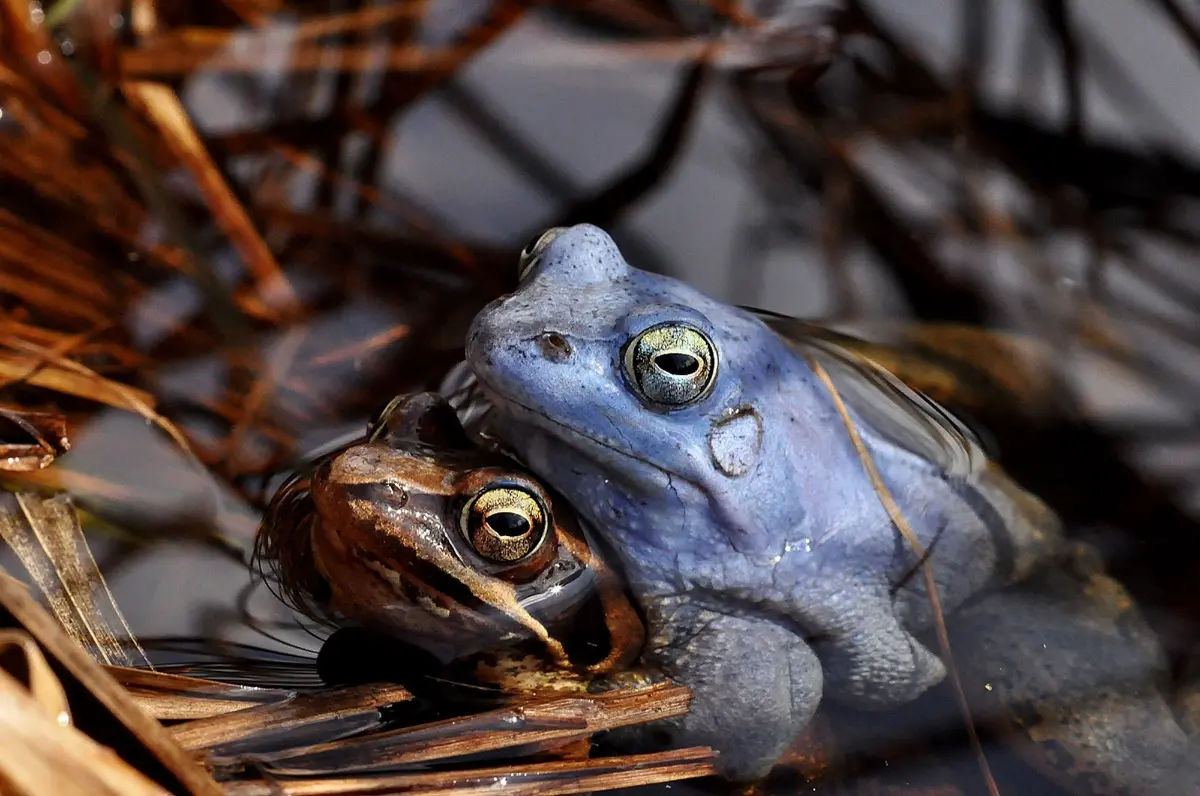
Helyszín címkék:
Special animals and their observations: Man in Black "worms" and a lonely lynx in Börzsöny!
Szabó Sára
Blue-coloured frogs in Ócsa
For most of its life, the marsh frog (Rana arvalis) is a decent 'frog-coloured', or brownish shade. Male frogs, however, are often sky blue during the mating season due to the fluid that accumulates under their skin. If you visit the Duna-Ipoly National Park, including Ócsa and its surroundings, in early spring, you can catch the mating season of the marsh frog. Then the marsh frog can dazzle the lucky hiker with its special colour.
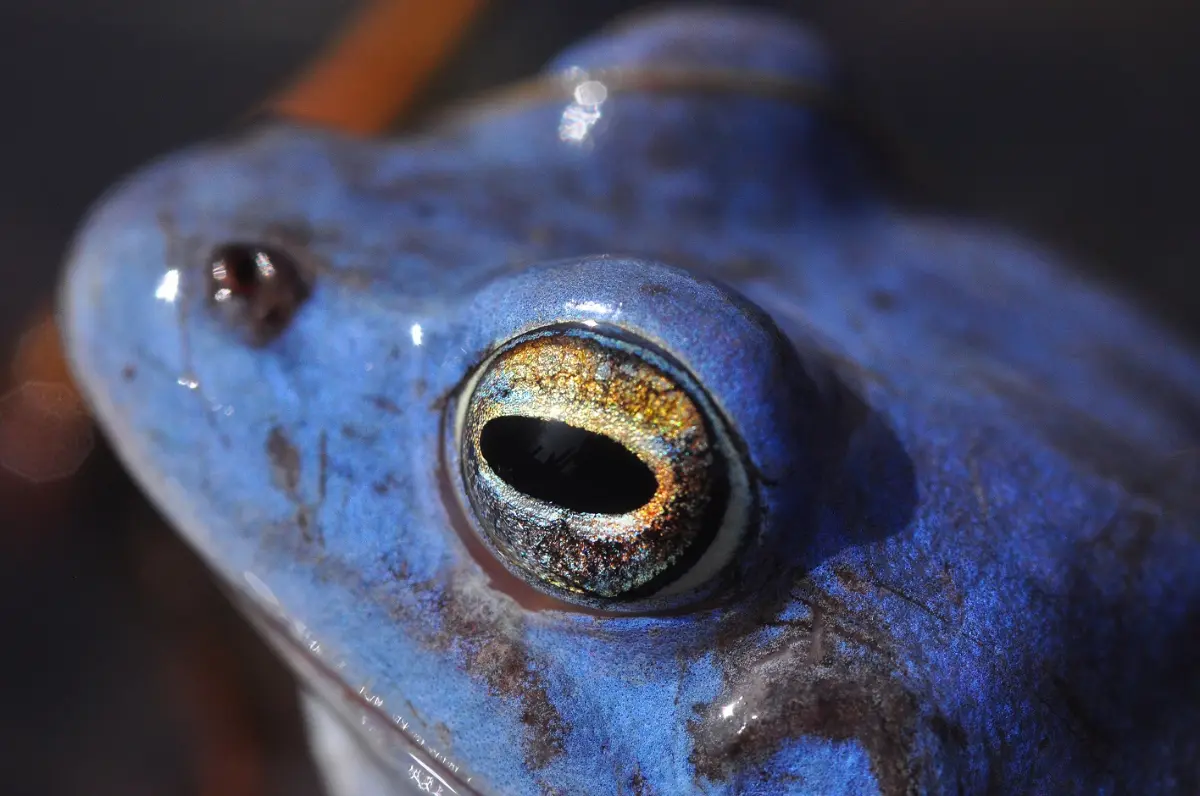
“Ladybird” spiders on the Sas-Hill
Bull spider (Eresus cinnabarinus), known in English as "ladybird spider", is a special creature with a size of 5-6 mm, and the male is very conspicuous in colour. Its abdomen is bright red with four black spots, which – as its nickname mentions – reminds us of the ladybug. The interesting small animals can be observed in spring and autumn on Sas-Hill, located in the Danube-Ipoly National Park. The 850-meter-long nature trail of the Budai Sas-Hill Nature Reserve can also be walked with a professional guide. During the tour, you can find out what the dolomite phenomenon is, you can see the characteristic geological forms caused by thermal water activity, and you can get to know the specific wildlife due to the microclimate of the area - including ladybird spiders.
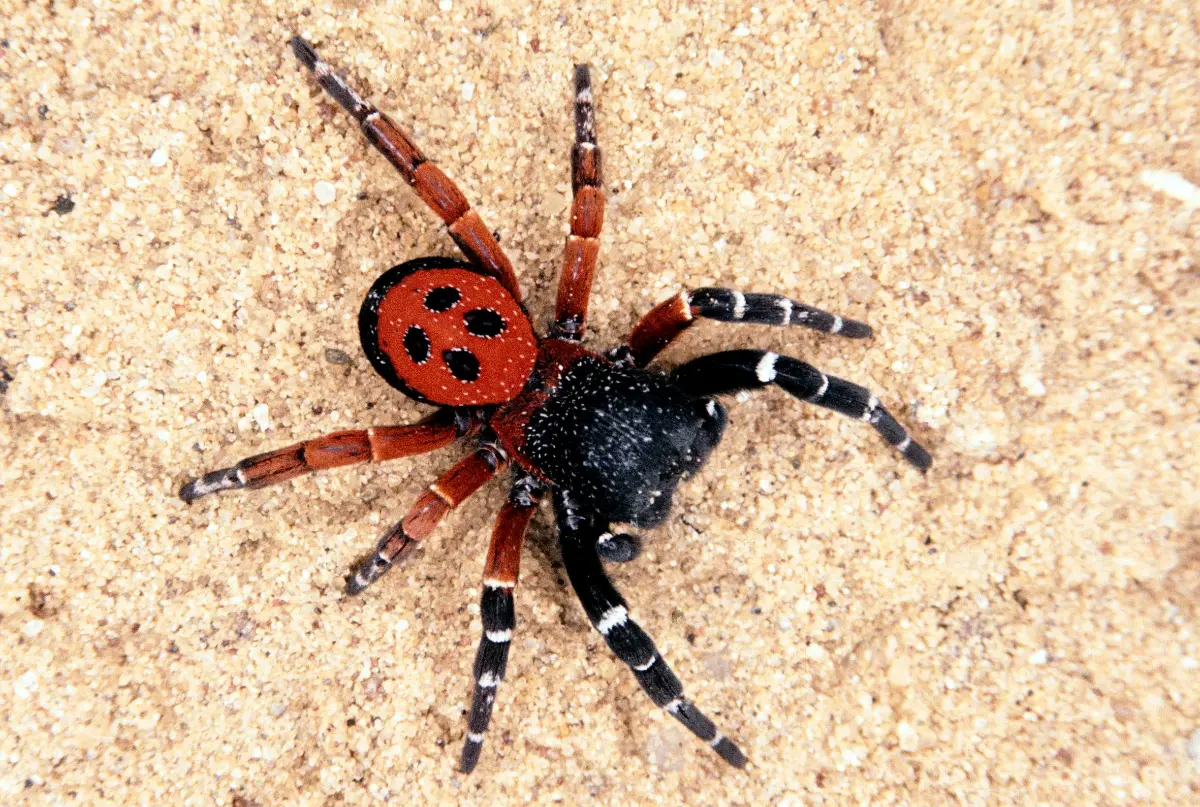
Börzsönyi Szilveszter Botond, the lonely lynx
The lynx is a medium dog-sized large carnivorous feline, its fur is spotted, there are tufts on its ears, and its muzzle is framed by a beard. These features make his figure very distinctive. It usually beds in thickets, in undisturbed forests, and its voice resembles a strange, screechy laugh. It does not seek the proximity of humans, rarely shows itself, preferring to inhabit forests less frequented by humans. In Hungary, the lynx was thought to be extinct until the 1980s, but traces were found again in the Börzsöny area in the 1970s and 1980s, and after the turn of the millennium the mysterious animal also appeared on camera trap footage.

“Our lynx is called Börzsönyi Szilveszter Botond, and it has only been in front of prying eyes a few times. Even those who follow it regularly may only catch a glimpse of the animal once or twice in their lifetime - says László Darányi, nature conservation officer of the Danube-Ipoly National Park. Szilveszter Botond is probably the only lynx that lives in Hungary, it got its name from the fact that it was spotted by photo traps on New Year's Eve 2015 and later on 16 May, 2016, on Botond’s Day.
Curious forest walkers can track down the wild cat on the national park's winter track-finding tours, so those who are really lucky can observe the footprints of Szilveszter Botond!
Zsuzsóka, the yellow beetle, who is actually Gyöngyi
The short-nosed weevil is an interesting creature from several points of view. On the one hand, its appearance is also impressive: a yellowish-brown, 6-6.5 mm beetle, which can be found on mossy oaks, in its limestone and dolomite habitat in the hills, mostly in the Pilis. On the other hand, it was only discovered two years ago! Júlia Villő Lovranits, head of the Danube-Ipoly National Park, says that in 2022, Valentin Szénási, a specialist of the Danube-Ipoly National Park Directorate, found the special animal. Valentin named the beetle after his wife, who is not Zsuzsanna, but Gyöngyi. The secret is revealed that in honour of Gyöngyi Szénásiné Demeter, the beetle, which belongs to the genus known in Hungarian as zsuzsóka (Curculio), was given the Latin name Curculio gyongyiae. We have known ten species in our country so far, the short-nosed weevil became the eleventh.
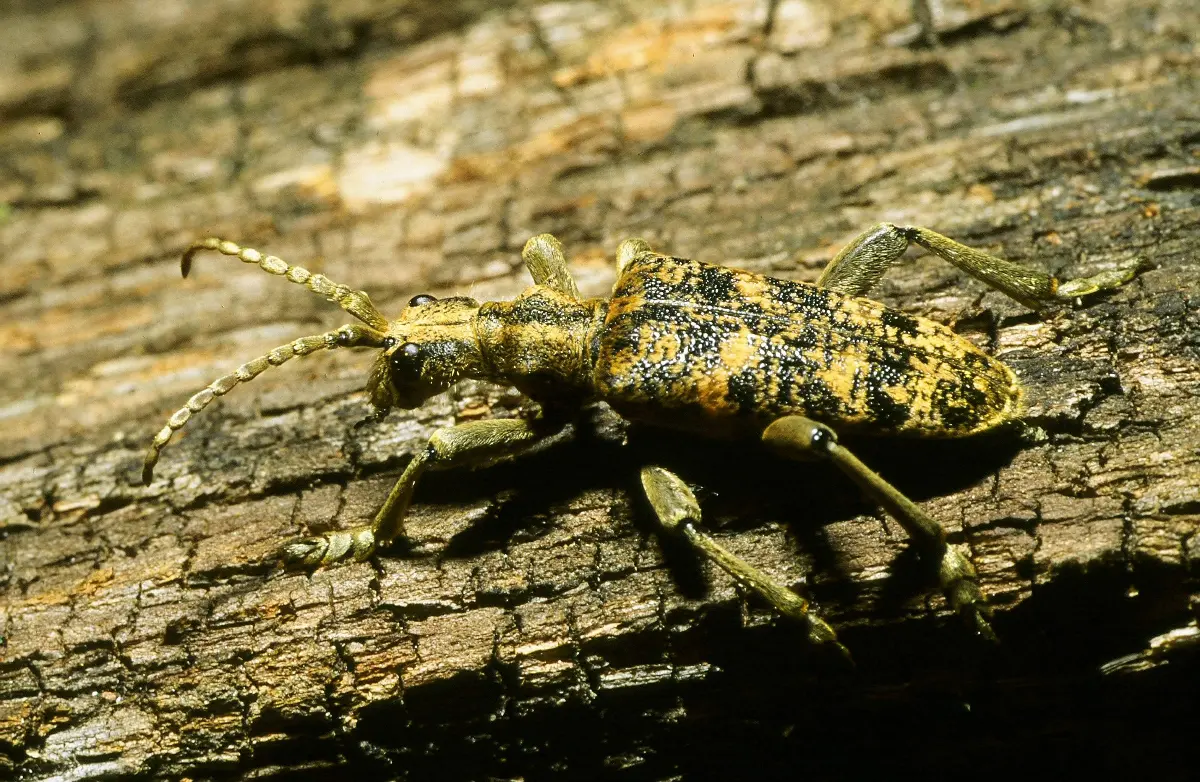
The Men in Black “worms”
The thorny oak longhorn beetle (Rhagium sycophanta) is the largest species of the sycophanta family: its body is 17-26 mm long and it is a common inhabitant of mountain and hilly oak forests. They look as if they were inspired by the characters in Men in Black: you can just see them leaning phlegmily against the bar. But they are not secret aliens, they are Earthlings, common in Hungary.

